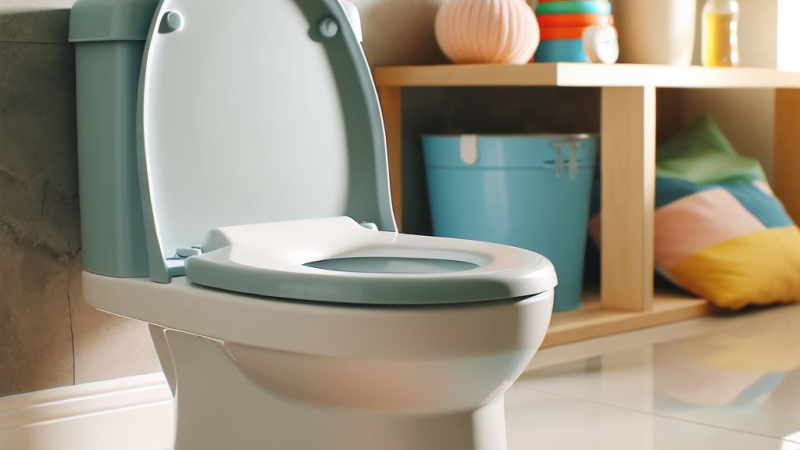
When to Stop Using Diapers and How to Use a Baby Potty: Complete Guide
Stopping the use of diapers is one of the most exciting milestones in a child’s development. However, it often raises questions about when to do it and how to do it effectively. If your child is showing signs of readiness, using a baby potty can be the perfect tool to take the next step in their development. In this guide, we provide practical tips for making the transition from diapers to the potty as smooth and successful as possible, with a particular focus on the baby potty.
When to Stop Using Diapers?
Determining the right time to stop using diapers can be tricky, as it depends on each child's individual development. However, there are some clear signs that indicate your child is ready to start using the baby potty and stop using diapers.
Recommended Age to Use a Baby Potty
Most children begin potty training between 2 and 3 years old. However, some may be ready earlier or later. It’s important to look for readiness signs such as interest in the potty, bladder control, and the ability to follow simple instructions.
Signs Your Child is Ready for the Baby Potty
- Interest in the bathroom: If your child starts showing curiosity about the baby potty or how adults or older siblings use the bathroom, it’s a good sign they’re ready to begin potty training.
- Bladder control: If your child is staying dry for long periods, it indicates they have the necessary bladder control to begin potty training.
- Understanding instructions: If they can understand and follow simple instructions, like "sit on the potty", they are likely ready to start potty training.
- Physical development: Children need to be able to walk to the potty and sit down on it without help, indicating they have reached the necessary physical development to use the baby potty independently.
How to Use the Baby Potty: A Step-by-Step Guide
Once you’ve determined that your child is ready to stop using diapers, follow these steps to introduce them to the baby potty successfully:
1. Choose the Right Baby Potty
The first step to successful potty training is choosing the right baby potty. There are many types of potties available, from simple models to more advanced ones with extra features such as music or sounds. Make sure to select one that is comfortable, easy to use, and appealing to your child.
2. Introduce the Baby Potty Gradually
Don’t rush your child into using the baby potty right away. Start by showing them the potty and allowing them to get familiar with it. Let them sit on the potty for a few minutes while playing or reading a story. It’s important that they feel comfortable and not pressured.
3. Establish a Routine
Setting up a routine for using the baby potty is key. Take your child to the potty several times a day, especially after meals, before naps, and when they wake up. As they get used to it, the baby potty will become a natural part of their day.
4. Use Easy-to-Remove Clothing
Potty training will be more efficient if your child’s clothing is easy to remove. Opt for pants with elastic waistbands or clothes without buttons or zippers, so your child can quickly get to the baby potty when needed.
5. Reward Achievements and Celebrate Success
Use a reward system to motivate your child to use the baby potty. For example, give them a sticker each time they use it correctly. Positive reinforcement helps create a connection between using the potty and a sense of accomplishment.
6. Be Patient and Supportive
It’s important to remember that every child progresses at their own pace. There will be accidents and moments of frustration. Stay calm and make sure your child feels supported. Avoid scolding or punishing when accidents happen, as this can create anxiety. The key is positive reinforcement and patience.
Common Mistakes When Using the Baby Potty
Although potty training is a natural process, there are a few common mistakes parents should avoid:
- Forcing your child to use the potty too early: Every child develops at their own pace. If they are not ready, it can create resistance to the potty.
- Not being consistent with the routine: Not following a set routine can confuse your child and make the potty training process more difficult.
- Using punishments for accidents: Accidents are part of the process. Punishing your child for not using the potty correctly can make the training process negative and frustrating.
Additional Tips for Successful Potty Training with a Baby Potty
- Get your child involved: Let them choose their potty or big-kid underwear. This will get them excited and more engaged in the process.
- Reinforce personal hygiene: Teach them how to wipe properly after using the potty. This is essential for developing healthy habits.
- Stay calm if the process takes longer than expected: Some children take longer to stop using diapers. If your child continues having accidents after several months, consider consulting a pediatrician to rule out any medical issues.
Conclusion
Stopping the use of diapers and starting to use the baby potty is a crucial stage in your child’s development. Make sure your child is ready for potty training, choose the right potty, and establish a consistent routine. Patience and positive reinforcement are the keys to making this process a success. Remember that each child develops at their own pace, so it’s important to respect and support them throughout the entire process.
